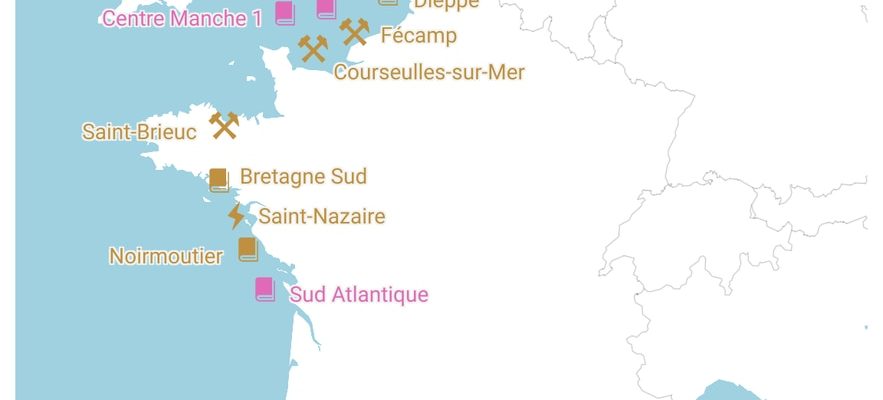A common ambition to increase the capacity of wind turbines in the North Sea tenfold, to accelerate the decarbonization of the continent. Monday, April 24, a summit is to be held in Ostend in Belgium with nine European heads of state, including French President Emmanuel Macron, German Chancellor Olaf Scholz or Dutch Prime Minister Mark Rutte, to develop the field of wind turbines. More than specific partnerships, it will be a question of coordinating national policies, Belgian Prime Minister Alexander De Croo told the press last week, at the initiative of this meeting.
“The main thing is not so much to state ambitious objectives as to be quick to execute”, he said, calling for strengthening technological “standardization” to build faster and to “better align the calls for ‘bids’ so as not to saturate supply chains. “Together the ambition is around 300 gigawatts (GW) by 2050,” said Alexander De Croo. This is ten times more than the capacities currently installed. The forecast for 2030 is to at least quadruple the current fleet, he added.
If the United Kingdom has 14 GW of offshore wind power and Germany 8 GW, the capacities of Denmark, Belgium and the Netherlands are between 2 and 3 GW, and those in France and Norway at around 0.5. “The orders of magnitude are gigantic […] With us as with our neighbours, offshore wind power will probably be between 2030 and 2050 the main source of renewable energy production, far ahead of solar and onshore wind power”, we observe at the Elysée.
Huge investments
After a first meeting of four countries in May 2022, this second “North Sea summit” is part of Europe’s climate objectives as well as the desire to cut its dependence on imported fossil fuels following the war in Ukraine. The EU recently agreed to double, to 42.5%, the share of renewables in its energy consumption by 2030, in particular by speeding up the authorization procedures for infrastructures. Brussels also offered regulatory relief for green industries in mid-March.
The Ostend objectives are achievable “because Europe has technological and industrial leadership in offshore wind power”, but “there is a lack of mobilization of funding” to support the rise of production chains, warns Pierre Tardieu of the WindEurope industrial federation. European industry should thus manufacture within five years the equivalent of 20 GW of offshore wind turbines per year, against a capacity of approximately 7 currently… at the risk of saturated factories and bottlenecks on the components.
Offshore wind turbines in France
© / The Express
Nacelles, blades, cables… “We don’t produce enough of certain crucial elements today. A lot of funding goes to innovation, but the challenge is to invest in existing production structures, which must be doubled, tripled capacity”, explains Pierre Tardieu to AFP. The total cost promises to be colossal: at the end of 2020, Brussels estimated the investment needs at 800 billion euros if the EU alone aimed for 300 GW of offshore wind power by 2050.
